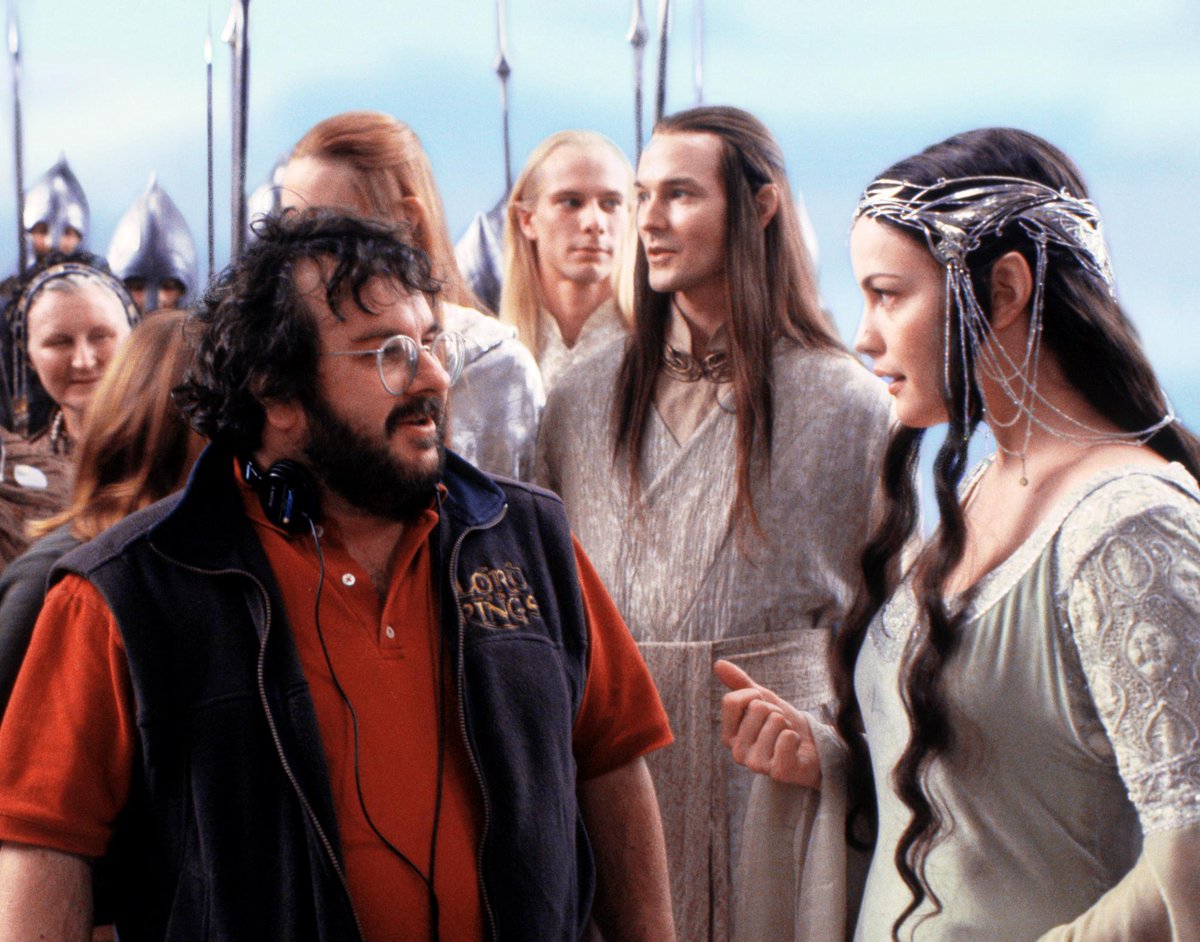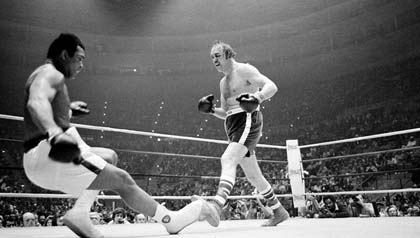THE USUAL SUSPECTS was released 28 years ago this week. Acclaimed as one of the great thrillers of the 1990s – and with one of the great twists - the making of story is a fascinating one…
A THREAD
1/38




A THREAD
1/38




In 1993, writer Christopher McQuarrie and director Bryan Singer collaborated on drama Public Access. Thinking of their next project, McQuarrie read an article titled “The Usual Suspects”. He even had an idea for a movie poster and a tagline: “All of you can go to hell.”
2/38


2/38


McQuarrie told Singer about his idea, and he liked it. Then, after Signer met with the Japanese funders of Public Access and convinced them to fund his next film, he called McQuarrie and said “I want you to pitch The Usual Suspects to me in 3 days.”
3/38


3/38


McQuarrie worked in a law firm at the time and had the idea of a villain getting away with it by coming up with a story based on notes on a Quartet bulletin board. He pitched the ending of the film to Singer, and Singer said “That’s great. I need the screenplay in 2 weeks.”
4/38


4/38


Needing to write quickly, McQuarrie based the opening scene aboard the ship on a scene he’d written before and never used. And character names were taken from solicitors he worked with. Dave Kujan was one such person.
5/38


5/38


When McQuarrie gave his screenplay to Singer he had a stipulation - they needed to misdirect the audience so as not to expect the twist. As such, McQuarrie suggested to Singer that he cast Kevin Spacey as the hidden villain as Spacey was relatively unknown at the time.
6/38


6/38


When Spacey was sent the script, he hadn’t been told which part was his. As such, he was interested in playing Keaton or Kujan. Once he was told what he was actually wanted for, he was surprised but thought it would be a new challenge.
7/38


7/38


Spacey met with doctors and experts on cerebral palsy to research how it would affect his character. He also reportedly filed down his shoes to make it appear like he was limping, and apparently glued his fingers together for some scenes.
8/38


8/38


Fred Fenster was written as a seasoned old pro. As such McQuarrie wasn’t keen on Benicio Del Toro. This was heightened when BDT came in to audition and said “I don’t read. I do my thing and if you don’t like it, we change it.”
9/38


9/38


To McQuarrie’s dismay, Singer cast Del Toro and told McQuarrie not to speak to the cast as he’d confuse them. This was fine until one evening when Del Toro called McQuarrie by phone as he had problems with some dialogue…
10/38


10/38


BDT basically said “My eyebrows have been waxed. I’m Puerto Rican. I got a Jewish last name. So I’m gonna play it like a black, Chinese, Puerto Rican Jew.” McQuarrie later credited Del Toro with largely creating the character.
11/38


11/38


Del Toro had been watching Stanley Kubrick’s The Killing, where one character talks constantly through clenched teeth. He loved it and wanted to make Fenster unintelligible. When Singer realised Fenster had no key dialogue, he said “Go for it.”
12/38


12/38


On the first day on set, Byrne approached Singer and said “No disrespect to Benicio, but we can’t understand a f***ing word he’s saying.” Singer told the actors to improvise, which is why the characters ask Fenster what he’s saying so often.
13/38
13/38
Gabriel Byrne originally turned down the part of Keaton as he wasn’t impressed by the ending, but Singer convinced him. He pulled out again just before filming due to the breakup of his marriage but Singer moved things around so Byrne didn’t have to leave L.A.
14/38


14/38


Michael Biehn was asked to audition for the role of McManus but turned it down as he was already signed up to appear in Jade. As such, the part went to Stephen Baldwin.
15/38



15/38



The part of Kujan was reportedly offered to Christopher Walken, Robert De Niro and Al Pacino. All turned it down, which is when Chazz Palminteri came in. He was only available for 1 week so the schedule was adjusted accordingly.
16/38




16/38




McQuarrie had previously worked for a detective agency- an influence on the script in terms of his experience with the law. He also worked at a law firm where one lawyer was called Kayser Sume – McQuarrie changed it to Keyser Soze at the request of Sume.
17/38


17/38


Another inspiration for the character of Soze was John List – a real-life murderer who killed his family in 1971 and went on the run for 17 years before he was finally apprehended. This backstory is similar to Soze’s.
18/38


18/38


One of the most famous lines is Kint: "The greatest trick the devil ever pulled was convincing the world he didn’t exist." In 1864, French poet Charles Baudelaire wrote Le Joueur Genereux and said “the loveliest trick of the Devil is to persuade you that they don’t exist!”
19/38


19/38


The editor on Public Access was John Ottman. When the composer dropped out, Ottman put himself forward for that too. On The Usual Suspects, Singer said“You’re not gonna score this unless you edit it.” Ottoman said “I’m not gonna edit it unless I score it.” He did both.
20/38


20/38


Stephen Baldwin and Kevin Pollak did not get on on the set. Pollak said that Baldwin would stay in character between takes and go round trying to bully the other actors. Pollak didn’t like it and the two reportedly fell out for years afterwards.
21/38


21/38


The climax at the docks was shut down when police received a call the ship was holding illegal substances. The ATF raided and the shoot was shut down. The producers made a desperate call to the mayor in the early ours and that halted the raid, allowing filming to resume.
22/38
22/38
The opening scene reveals all of Kint’s false disguises. We see Soze urinate easily, walk with no limp, and use his left hand with no problems. All things we see through the film that Kint is supposedly unable to do.
23/38
23/38
Singer was influenced by some old classics. He described the film as Double Indemnity meets Rashomon. He compared the structure to Citizen Kane and said “. You can get it a second time in a way you never could have the first time around."
24/38



24/38



Shooting the underground parking garage robbery took 25 hours as Singer wasn’t happy with what they shot. Even then he wasn’t happy and wanted to carry on but the producers point blank refused.
25/38
25/38
It’s foreshadowed early on that Hockney stole the gun parts from the truck. Kujan says “Say you pin three guys for the same murder. Whoever's sleeping is your man.” When the criminals are first seen in the cell, Hockney is sleeping.
26/38


26/38


The line-up scene was scripted as a serious scene, but the actors kept breaking out in fits of laughter. Singer got annoyed told them to stop but Del Toro apparently kept farting take after take. Singer kept the cameras rolling and Ottman picked out the funniest moments.
27/38
27/38
When Redfoot flicks his cigarette at McManus, it was supposed to hit his chest. It actually hit Baldwin in the eye and the reaction we see is the actor’s real one. Baldwin said to Singer “Did you get it? Because I just experienced it. So if you got it, please use it!'”
28/38
28/38
There are clues that Kint is Keyser Soze. Kint says his nickname is ‘Verbal’ as he talks too much. In German-Turkish, ‘Keyser Soze’ can be loosely translated as ‘King of the talkers.’
29/38


29/38


Also, In the gunfight at the pier, every Soze POV shot is directly preceded by a shot of Kint. And almost every time Keyser Soze’s name is mentioned, the next shot is a shot of Kint.
30/38


30/38


At the end of the Redfoot deal scene, Kint says "A man can convince anyone he's someone else, but never himself." We think he’s talking about Keaton but, as it turns out, he’s talking about himself.
31/38
31/38

5 different actors play Soze through the film. Spacey and Byrne are both seen as him at different points. When Soze lights a cigarette, it’s John Ottman’s hand we see. Singer is the close up of Soze’s foot. And the Soze we see with long hair was one of the grips.
32/38



32/38



After shooting wrapped, Singer wasn’t happy with the twist reveal: “You didn’t feel it viscerally he said.” He said to John Ottman picked out images that showed Kint was Soze and cut a montage together that emphasised the reveal.
33/38
33/38
Singer convinced all of the main actors they were Keyser Soze. To the point that at the first screening, Byrne stormed out and argued with Singer for half an hour. When asked later "Who is Keyser Soze?” Byrne said "Until watching the film tonight, I thought I was!"
34/38


34/38


Christopher McQuarrie appears at the end as a police officer. As Kujan looks for Kint we see a police officer seeming to laugh at the camera. This is McQuarrie, seemingly laughing at the audience after hoodwinking them.
35/38


35/38


So audiences wouldn’t struggle, distributors Gramercy launched a campaign "Who is Keyser Soze?" before release. Singer and McQuarrie asked them not to put it on the poster and a marketing exec said “People are cretins, you need to hit ‘em over the head.”
36/38
36/38
Acclaimed film critic Roger Ebert wasn’t a fan. He gave The Usual Suspects 1.5 stars and said: “To the degree that I do understand, I don’t care.” Someone who was a fan was US President Bill Clinton, who reportedly kept a copy of the film on Air Force One.
37/38


37/38


The film was only shown in approx. 900 cinemas on its release and only made about $60m at the box office – though with a budget of just $6m, that was still a huge return. The film’s status grew enormously – and quickly – and it is now regarded as a modern classic.
38/38




38/38




If you liked this thread, please RT the first tweet…
https://twitter.com/ATRightMovies/status/1693207876272030027?s=20
Our latest podcast is on THE PRESTIGE. Full of big laughs and opinions so please give it a listen 😀
alltherightmovies.com/podcast/the-pr…
alltherightmovies.com/podcast/the-pr…
• • •
Missing some Tweet in this thread? You can try to
force a refresh

















































